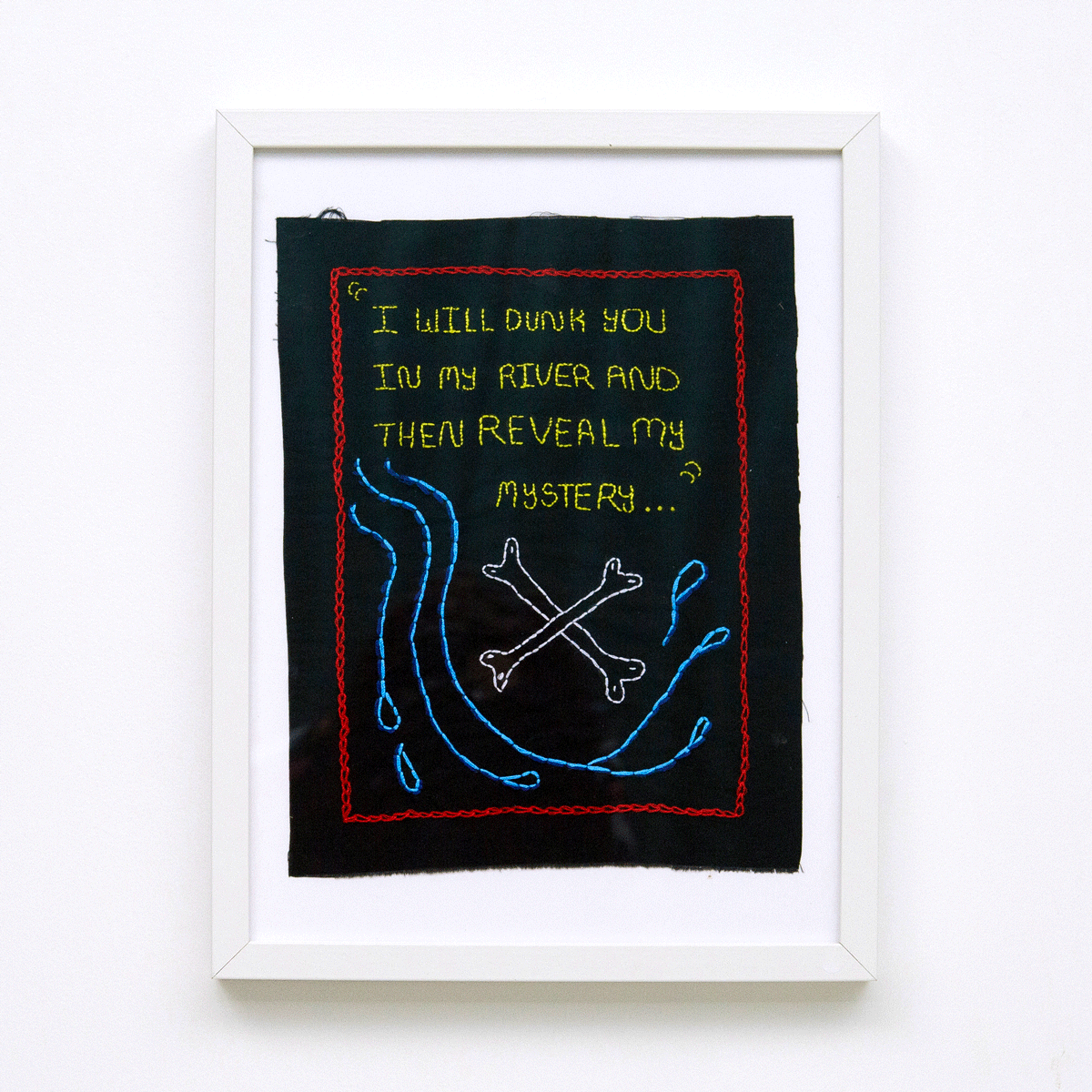Crossbones Graveyard, Southwark
Words and handkerchief by Dr Lucy Coleman Talbot
The Crossbones Graveyard is a post-medieval pauper burial ground with a distinctive mythic identity. In the 1990s, Museum of London Archaeology estimated that around 15,000 men, women, and children had been buried at the ground.
Though, today, Crossbones is more commonly associated with the burial of medieval workers. Sex work was legalised in the Bishop of Winchester's Liberty of the Clink, yet according to 16th-century historian John Stow, these women 'were forbidden the rights of the Church, so long as they continued that sinful life, and were excluded from Christian burial, if they were not reconciled before their death' (A Survey of London, 1598). Stow provides no location for what he refers to as a ‘Single Women’s Churchyard’, but there has been a long held local belief – first documented in 1795 - that Crossbones is their final resting place.
This embroidery pays homage to the revealing of this hidden history in 1996, when playwright John Constable's psychedelic encounter with the spirit of a medieval sex worker sparked a reimagining of Crossbones and awakened it in public memory.
The words stitched are taken from Constable’s play The Southwark Mysteries (1999), spoken by The Goose (said spirit) that night.
This artwork is part of The Wall of Sexual Heroes, a collaborative textile art piece featured in our previous exhibitions at the Horse Hospital (2022) and Bow Arts Lab (2023). All embroidered, printed and appliquėd handkerchiefs celebrate unsung heroes of sexual emancipation, activism and innovation.
The Wall is an organic work. If you would like to contribute, please get in touch with The Keeper.




